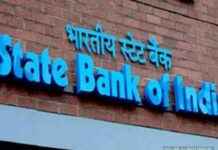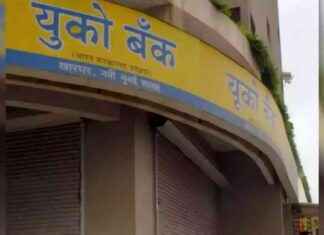MBBS in India: Unveiling the True Costs for 2024
As the dawn of 2024 approaches, thousands of aspiring medical students across India are gearing up to embark on a journey that is as prestigious as it is challenging: earning a Bachelor of Medicine, Bachelor of Surgery (MBBS) degree. While the allure of donning the white coat is undeniable, the financial aspect of this dream remains a significant hurdle for many. The cost of medical education in India has always been a topic of intense discussion, but what does the landscape look like in 2024? In this article, we’ll delve deep into the true costs associated with pursuing an MBBS in India. From tuition fees and hostel charges to hidden expenses and financial aid options, we aim to provide a comprehensive overview that helps future doctors and their families plan effectively. Join us as we unveil the layers of financial commitment required to forge a path in the medical field this year.
Overview of MBBS Education in India for 2024
Overview of MBBS Education in India for 2024
The journey towards becoming a doctor in India traditionally begins with the MBBS (Bachelor of Medicine, Bachelor of Surgery) degree. As we approach 2024, the landscape of MBBS education in India continues to evolve, influenced by regulatory changes, technological advancements, and economic factors. Understanding the structure, admission process, and the financial implications of MBBS education is crucial for aspiring medical students and their families.
Structure of MBBS Program
An MBBS program in India spans over five and a half years, including a compulsory rotating internship of one year. The curriculum is designed to build a strong foundation in medical knowledge, with the initial years focused on basic sciences such as Anatomy, Physiology, Biochemistry, and Pharmacology. As the course progresses, students delve into more specialized subjects including Pathology, Microbiology, Forensic Medicine, and Medicine and Surgery practices.
The teaching methodologies encompass a blend of theoretical knowledge and practical exposure. Medical colleges in India are increasingly incorporating digital tools and simulations, a trend that is expected to expand further by 2024. This integration of technology enhances the learning experience and prepares students for a modern healthcare environment.
Admission Process
Gaining admission into an MBBS program in India is highly competitive. The primary gateway is the National Eligibility cum Entrance Test (NEET), which is mandatory for all aspirants. NEET tests the candidates on topics covered in the 11th and 12th standard sciences, making it a high-stakes exam for which many students prepare extensively, often with years of coaching.
From 2024 onwards, the reservation policy in medical seats also reflects the social diversity of India, with specific quotas for SC, ST, OBC, and Economically Weaker Sections (EWS). This ensures a more inclusive educational environment but also intensifies the competition for general category students.
Cost of Education
The cost of MBBS education in India varies widely between government and private institutions. Government colleges are significantly subsidized, with annual fees ranging from INR 10,000 to INR 50,000. However, seats in these colleges are limited and highly coveted.
Private medical colleges, on the other hand, can charge anywhere from INR 10 lakhs to INR 25 lakhs per annum in 2024. This does not include additional expenses such as hostel fees, books, and other supplies. The variation in fees is often reflective of the infrastructure, clinical exposure, and the quality of faculty at the institution.
Moreover, the introduction of the National Medical Commission (NMC) Act has brought about changes in fee structures in private colleges, with an aim to regulate the exorbitant fees and cap them to a reasonable limit. This is a significant development for students planning to enroll in 2024, as it might make private college fees more predictable and standardized.
Scholarships and Financial Aid
Recognizing the financial burden on medical students, several scholarships
Understanding the Fee Structure for MBBS in India
Understanding the Fee Structure for MBBS in India
When considering a career in medicine in India, understanding the fee structure for a Bachelor of Medicine and Bachelor of Surgery (MBBS) program is crucial. The cost of pursuing an MBBS degree in India can vary widely depending on several factors, including the type of institution (government or private) and its location. As we head into 2024, it’s essential for prospective students and their families to grasp these differences to plan effectively.
Government vs. Private Medical Colleges
**Government Medical Colleges:** Typically, government-funded medical colleges offer the most affordable option for studying MBBS in India. The fees in these institutions are heavily subsidized by the government, making them significantly lower than those in private colleges. As of 2024, the annual fee for an MBBS program in a government college can range from INR 10,000 to INR 50,000. However, gaining admission to these colleges is highly competitive, given their lower fees and generally high academic standards.
**Private Medical Colleges:** On the other hand, private medical colleges tend to charge higher fees, reflecting their reliance on self-funding. The annual tuition fees in private medical colleges can range anywhere from INR 2 lakhs to over INR 20 lakhs. The wide range in fees can be attributed to various factors including the location of the college, the infrastructure available, and the additional amenities provided to students.
Deemed Universities
Deemed universities represent another category of institutions offering MBBS courses in India. These universities are granted autonomy in setting their curricula and fees. Typically, the fees at deemed universities are higher than those at government colleges but can vary widely among the universities themselves. The fee for MBBS courses in deemed universities can range from INR 10 lakhs to INR 25 lakhs per annum.
Additional Costs
Apart from tuition fees, there are other costs associated with pursuing an MBBS in India that should be considered:
– **Hostel and Accommodation Costs:** Many students relocate to different cities or states for their medical education. The cost of accommodation can vary widely depending on the city and the type of accommodation chosen. On average, hostel fees in medical colleges can range from INR 50,000 to INR 1,50,000 per annum.
– **Mess and Living Expenses:** Daily living expenses including food, travel, and other personal expenses can also add significantly to the overall cost. Depending on the city, students might need to budget anywhere from INR 5,000 to INR 10,000 per month.
– **Books and Supplies:** Medical books and supplies, which are essential for the course, can also be quite expensive. Students might spend around INR 10,000 to INR 50,000 annually on books and other supplies.
– **Miscellaneous Fees:** These can include examination fees, laboratory fees, and other miscellaneous charges imposed by the institution. It’s
Top Medical Colleges in India and Their Fees
Top Medical Colleges in India and Their Fees
Choosing the right medical college is a pivotal step for aspiring doctors, and India, with its blend of prestigious government and private institutions, offers a wide array of options. The fees for studying MBBS in India can vary significantly depending on the type of institution—government or private. Here, we explore some of the top medical colleges across India and provide an insight into their fee structures for 2024, helping students make informed decisions.
1. All India Institute of Medical Sciences (AIIMS), New Delhi
Regarded as the zenith of medical education in India, AIIMS New Delhi is not only renowned for its superior quality of education but also for its highly subsidized fee structure. The institution charges approximately INR 1,628 per annum for Indian nationals, which includes tuition, registration, and other miscellaneous costs. This makes AIIMS an extremely cost-effective option, provided students can secure a seat through its highly competitive entrance exam.
2. Christian Medical College (CMC), Vellore
CMC Vellore stands out for its commitment to excellence and community service in medical education. The fee for an MBBS program at CMC is relatively affordable compared to private colleges, with an annual tuition fee of about INR 48,330. However, students also need to consider additional charges including hostel, mess, and other institutional fees.
3. Armed Forces Medical College (AFMC), Pune
AFMC Pune is a leading medical college for defense personnel and their dependents, but it also admits civilian students. The fee structure here is highly subsidized, similar to AIIMS, with an annual fee around INR 31,870 for civilians. This includes tuition, mess, and accommodation, making it one of the most economically viable options for MBBS students.
4. Maulana Azad Medical College (MAMC), Delhi
Located in the capital city of India, MAMC is another premier government medical college known for its high standards in medical education. The annual tuition fee for MBBS at MAMC is around INR 2,445 for Indian students, which is remarkably low for the quality of education it offers.
5. Kasturba Medical College (KMC), Manipal
As part of the private sector, KMC Manipal is one of the top-ranked medical colleges in India. It offers state-of-the-art facilities and a diverse learning environment. The fees for the MBBS program, however, are on the higher side, reflecting the private status of the college. The annual tuition fee is approximately INR 14,40,000, exclusive of hostel and other charges.
6. Jawaharlal Institute of Postgraduate Medical Education and Research (JIPMER), Puducherry
JIPMER is an Institute of National Importance and one of the leading medical institutions in India. It offers a very affordable MBBS program, costing
Government vs Private MBBS Fees Comparison
Government vs Private MBBS Fees Comparison
Choosing between a government and a private medical college is a significant decision for aspiring doctors in India. The decision often hinges on numerous factors, including the cost of education, which varies dramatically between these two types of institutions. Understanding the fee structure for MBBS programs in both government and private colleges is crucial for students and parents planning their educational and financial future.
Government Medical Colleges: An Affordable Pathway
Government medical colleges in India are highly subsidized by the state and central government, making them an affordable option for MBBS students. The fees in these colleges are markedly lower compared to their private counterparts. As of 2024, the annual tuition fee in most government medical colleges ranges from INR 10,000 to INR 50,000. This fee structure is designed to promote accessibility to medical education for students from various socioeconomic backgrounds.
For instance, prestigious institutions like AIIMS (All India Institute of Medical Sciences) charge approximately INR 1,628 per annum, not including hostel and other miscellaneous fees. Other top government colleges across different states maintain a similar bracket, though slight variations exist depending on the local government policies.
The significantly lower fee structure is supplemented by scholarships and grants available to meritorious and economically weaker students, making MBBS studies even more accessible. Furthermore, students graduating from government medical colleges are often considered for government jobs, which can offer a stable career path after graduation.
Private Medical Colleges: Higher Costs with Modern Amenities
On the other hand, private medical colleges in India charge substantially higher fees. The annual tuition fees in private colleges can range from INR 10 lakh to INR 25 lakh. This steep cost is due to several factors including the absence of government subsidies, higher operational costs, and the investments made in infrastructure, technology, and faculty.
Private medical colleges often boast state-of-the-art facilities, modern equipment, and smaller class sizes, which contribute to a more personalized education environment. These institutions also frequently partner with private hospitals, providing students with opportunities for hands-on training and exposure to advanced medical practices.
However, the higher fees can be a barrier for many students. To manage this, many private colleges offer various financing options like scholarships, education loans, and flexible payment plans to help mitigate the financial burden on students and their families.
Comparing the ROI
When comparing the return on investment (ROI) between government and private medical colleges, several factors need consideration. Graduates from government medical colleges often have less financial strain due to lower educational loans, which can be a significant advantage. Moreover, the degree from a reputed government college holds high regard in the job market, both in India and abroad.
In contrast, while graduates from private colleges also enjoy good recognition, the high initial investment can mean a longer period for ROI realization. Additionally, private college students might face a tougher competition in the job market where a premium is placed on graduating from top government institutions.
Conclusion
In conclusion, the
State-Wise MBBS Fee Analysis in India
State-Wise MBBS Fee Analysis in India
When planning to pursue an MBBS in India, understanding the nuances of state-wise fee structures is crucial. These fees can vary significantly based on several factors including the type of institution (government or private), location, and the financial subsidies provided by the state governments. For the academic year 2024, prospective medical students should be aware of these differences to make informed decisions about where to apply.
1. Government Medical Colleges
In government-run institutions, the MBBS fees are relatively lower due to subsidies provided by the state. For instance, in states like Tamil Nadu and Kerala, the annual fees can be as low as INR 10,000 to INR 20,000. This is because these states heavily subsidize education and prioritize accessibility. In contrast, states like Maharashtra and Gujarat have slightly higher fees in the range of INR 50,000 to INR 70,000 per year, reflecting differing subsidy levels and operational costs in these regions.
2. Private Medical Colleges
Fees in private medical colleges are notably higher and can vary even more dramatically between states. For example, Karnataka, a hub for private medical education with renowned institutions like Manipal Academy of Higher Education, charges between INR 6,00,000 to INR 20,00,000 annually. Similarly, private colleges in Maharashtra and Delhi can charge up to INR 25,00,000 per year. These fees are influenced by the demand for medical seats, the infrastructure provided, and the perceived prestige of the institutions.
3. Central Universities and AIIMS
All India Institute of Medical Sciences (AIIMS) campuses across India and central universities like Banaras Hindu University (BHU) offer MBBS courses at fees that are significantly lower than most state and private institutions. For instance, AIIMS charges a nominal fee of about INR 1,500 per annum, making it one of the most cost-effective and sought-after options in the country. This is designed to make top-tier medical education accessible to all segments of society.
4. Regional Variations and Other Factors
States in the Northeast like Assam and Manipur often have lower fee structures to encourage more students from these regions to enter the field of medicine. In contrast, newer private institutions in metro cities like Hyderabad and Bangalore might charge higher fees due to the higher cost of living and operational costs in urban areas.
5. Scholarships and Financial Aid
Most states offer various scholarships and financial aid options to economically weaker sections and merit-based scholarships which can significantly reduce the burden of MBBS fees. For example, several state governments have schemes that cover the full tuition for top performers in state-level entrance exams or for students from economically disadvantaged backgrounds.
Conclusion
The decision on where to pursue an MBBS in India should not be driven by fees alone. Prospective students must consider the quality of education, faculty, infrastructure, and
Impact of NEET Scores on MBBS Admission Costs
Impact of NEET Scores on MBBS Admission Costs
In the pursuit of an MBBS degree in India, the National Eligibility cum Entrance Test (NEET) plays a pivotal role, not just in determining eligibility but also significantly impacting the overall cost of admission. As the sole gateway for entry into medical colleges across India, NEET scores directly influence the trajectory of a medical aspirant’s educational expenses.
The link between NEET scores and MBBS admission costs is primarily through the type of seat one secures – government, management, or NRI quota. Each of these options has different fee structures, with government seats being the most affordable and NRI or management seats being at the higher end of the spectrum.
Government Quota Seats
For students who achieve high NEET scores, government seats are the most cost-effective option. These seats are heavily subsidized by the government, ensuring that the tuition fees remain low. For example, annual fees for a government seat can range from INR 10,000 to INR 50,000, a fraction of the cost compared to private or deemed universities. The competition for these seats is fierce, given their affordability and the high quality of education offered in government medical colleges. Thus, students with top-tier NEET scores predominantly fill these seats.
Private and Deemed Universities
Students who score moderately in NEET often opt for private or deemed universities, where the admission costs are significantly higher than in government institutions. The annual fee in these colleges can range from INR 10 lakh to INR 25 lakh. The exact impact of the NEET score in private colleges is seen in the scholarship opportunities and the ability to negotiate better fees. Some private institutions offer merit-based scholarships or fee concessions to students who have scored well in NEET, even if they do not qualify for a government seat.
Management and NRI Quota
For those who might not have fared as well in the NEET exam, management and NRI quota seats present an alternative route into MBBS programs. However, these seats come with a much higher price tag, which can range from INR 20 lakh to over INR 40 lakh per annum. The cost escalates further in highly reputed institutions. These quotas are less affected by NEET scores, focusing more on the financial aspect, making MBBS education accessible but at a premium.
The Cascading Effect of NEET Scores
The impact of NEET scores on MBBS admission costs extends beyond just the initial tuition fees. Securing a government seat not only reduces the tuition fee but also diminishes associated costs like hostel fees, mess charges, and other miscellaneous expenses, which are considerably lower in government colleges. Conversely, studying in private or deemed universities or under management/NRI quotas not only increases these costs but also adds the burden of higher living expenses, often associated with private campuses’ locations in metro cities.
Strategic Implications for Aspirants
Understanding the implications of NEET scores
How to Budget for MBBS in India
How to Budget for MBBS in India
Pursuing an MBBS (Bachelor of Medicine, Bachelor of Surgery) in India is a dream for many aspiring doctors, but the financial aspect of this journey can often seem daunting. As of 2024, the cost of medical education in India varies significantly based on factors such as the type of institution (government or private) and location. Understanding and planning your finances meticulously can help manage the costs effectively. Here are comprehensive strategies and tips on how to budget for an MBBS in India:
1. **Understand the Fee Structure**
The first step in budgeting is to understand the detailed fee structure of MBBS programs. Government colleges are substantially cheaper, with annual fees ranging from INR 10,000 to INR 50,000. In stark contrast, private colleges can charge anywhere between INR 10 lakhs to INR 25 lakhs per annum. Additionally, deemed universities set their fees, which can also be in the higher range. It’s crucial to research and compare the fee structures of various colleges and keep an eye out for annual increments in tuition fees.
2. **Consider Additional Expenses**
Beyond tuition fees, there are several other expenses to consider:
– **Hostel and Accommodation:** Depending on the city, hostel fees can range from INR 50,000 to INR 1,50,000 per year.
– **Books and Supplies:** Medical books and equipment can also be quite expensive, averaging around INR 10,000 to INR 50,000 annually.
– **Living Expenses:** Daily living costs, including food, transportation, and miscellaneous expenses, vary widely by location but can be estimated between INR 5,000 and INR 15,000 per month.
– **Miscellaneous Fees:** These can include university examination fees, library fees, lab fees, and more, adding up to INR 10,000 to INR 30,000 per year.
3. **Plan for Entrance Exams**
Budgeting for MBBS also includes the costs incurred while preparing for entrance exams like NEET (National Eligibility cum Entrance Test). Consider expenses for coaching classes, study materials, and registration fees for the exam. Coaching classes can range from INR 50,000 to over INR 1,50,000 depending on the institute’s reputation and course duration.
4. **Seek Scholarships and Financial Aid**
Many colleges and external bodies offer scholarships and financial aid options based on merit or financial need. Research these opportunities thoroughly. Government scholarships, merit-based scholarships provided by private colleges, and aid from various trusts and NGOs can significantly reduce the financial burden.
5. **Consider Education Loans**
Given the high cost of MBBS courses, taking an education loan is a common recourse. Public and private sector banks in India offer education loans at varying interest rates. It’s vital to compare the terms and conditions
Scholarships and Financial Aid for MBBS Students
Scholarships and Financial Aid for MBBS Students
Pursuing a Bachelor of Medicine and Bachelor of Surgery (MBBS) degree in India is a dream for many, but the financial aspect can often seem daunting. As of 2024, the cost of studying MBBS has seen a significant increase, making scholarships and financial aid crucial for many aspiring doctors.
**Government Scholarships**: The Indian government has instituted several scholarships to aid economically disadvantaged but academically talented students. One prominent example is the National Scholarship Portal (NSP), which aggregates various scholarships offered by different government bodies. For MBBS students, the scholarships can range from tuition fee waivers to complete financial support covering hostel fees and other expenses.
1. **Central Sector Scheme of Scholarship for College and University Students** by the Department of Higher Education, which targets meritorious students from low-income families, providing them up to INR 20,000 per annum.
2. **National Means-cum-Merit Scholarship**, which supports students from the weaker sections of society to meet their day-to-day expenses while pursuing higher studies.
**State Scholarships**: Various state governments also provide financial support depending on the student’s domicile. For instance, the *Mukhyamantri Medhavi Vidyarthi Yojana* in Madhya Pradesh offers full tuition fee waivers to students whose family income is below a certain threshold and who have excelled in their board examinations.
**Private Scholarships**: Numerous private organizations and foundations offer scholarships based on merit, need, community service, or a combination of criteria. The HDFC Educational Crisis Scholarship Support provides financial assistance to students who are facing a personal or family crisis that might interrupt their education. Similarly, the Tata Trusts Medical and Healthcare Scholarships assist students enrolled in medical and healthcare courses based on both merit and need.
**Institution-Based Scholarships**: Many medical colleges in India have their own scholarship programs designed to support students who excel academically or need financial aid. For example, AIIMS offers various scholarships and financial assistance programs to its students, including the *AIIMS Merit Scholarships* and *Financial Support for Economically Weaker Students*.
**International Scholarships**: For those considering studying part of their MBBS course abroad or looking for international exposure, several global scholarships are available. The Chevening Scholarships, for instance, provide an excellent opportunity for future healthcare leaders to pursue further studies in the UK, covering all tuition fees and living expenses.
**Loan Facilities**: Apart from scholarships, educational loans are widely available and a viable option for many students. Public sector banks in India, such as the State Bank of India and Punjab National Bank, offer education loans for medical studies at competitive interest rates with repayment periods that start after the completion of the degree. The Government of India also backs these loans under various schemes ensuring lower interest rates and subsidies for economically weaker sections.
For MBBS students in 2024, it is essential to start the research and application
Hidden Costs Associated with MBBS Programs
Hidden Costs Associated with MBBS Programs
Choosing to pursue a Bachelor of Medicine, Bachelor of Surgery (MBBS) in India is not just a significant educational commitment but also a substantial financial undertaking. While many students and their families prepare for the expected tuition fees, there are several hidden or less obvious costs that can affect the overall financial planning. Understanding these hidden costs is crucial for those aiming to manage their budgets effectively throughout the duration of the program.
**1. Hostel and Accommodation Fees:**
Beyond the tuition fees, accommodation costs can be a major expense for students, especially those studying away from home. While some government colleges offer relatively affordable hostel facilities, the charges can vary widely in private colleges. Additionally, the cost of living in cities with major medical colleges can be substantially higher than in smaller towns or rural areas. This includes higher prices for food, transportation, and basic utilities.
**2. Books and Supplies:**
Medical education requires an extensive list of books, medical journals, equipment, and supplies, including lab coats, stethoscopes, and more. The cost of medical books is notoriously high, and keeping up with the latest editions can be a costly affair. Furthermore, photocopies, printouts, and supplementary notes also add to the expenses, which are often overlooked during budget planning.
**3. Examination and Miscellaneous Fees:**
Throughout the MBBS course, students are required to pay various fees for examinations, re-examinations in case of failure, and other administrative services. These costs might seem minor individually but accumulate significantly over the course of the program. Additionally, fees for national-level competitive exams like NEET-PG (for post-graduation) also need to be considered if the student plans to specialize further.
**4. Clinical Rotations and Internship Travel:**
Clinical rotations are a compulsory part of MBBS education, requiring students to work in various departments and sometimes in different hospitals. This might involve traveling across the city or even to different states, depending on the tie-ups your college has with hospitals. The cost of daily commute or occasional relocation can be substantial, which is often not accounted for initially.
**5. Technology and Online Resources:**
In today’s digital age, access to online resources, specialized medical databases, and digital tools enhances learning but comes at a price. Subscriptions to online medical journals, participation in webinars, and purchase of e-books are additional costs that are becoming increasingly necessary for a comprehensive medical education.
**6. Student Welfare and Activities Fee:**
Many colleges charge a fee for student welfare, which includes access to sports facilities, libraries, and participation in cultural events. While these facilities contribute to a well-rounded education and personal growth, they also add to the overall cost of the program.
**7. Health Insurance and Medical Expenses:**
Considering the rigorous nature of medical education, maintaining good health is crucial. Many students opt for health insurance to cover unexpected medical expenses, which, while wise, is an additional cost
Loan Options for MBBS Students in India
Loan Options for MBBS Students in India
Pursuing a Bachelor of Medicine and Bachelor of Surgery (MBBS) in India is a significant financial undertaking, especially considering the fee structure for the academic year 2024. With the cost of medical education rising, it becomes crucial for aspiring doctors to explore reliable financial support systems. Education loans for MBBS students offer a feasible solution to manage these high expenses, allowing students to focus on their studies without the burden of financial constraints.
1. **Government-Backed Education Loans**
The Government of India has launched several initiatives to support financially weaker sections of society in accessing higher education. Nationalized banks, under the guidelines of the Indian government, offer education loans at subsidized interest rates. For MBBS students, these loans typically cover tuition fees, exam fees, laboratory and library charges, as well as costs related to books, equipment, and travel. One prominent scheme is the ‘Central Sector Interest Subsidy Scheme’, which subsidizes the interest during the moratorium period (course period plus one year) for loans up to INR 7.5 lakhs without requiring any collateral.
2. **Loans from Private Banks and NBFCs**
Private banks and Non-Banking Financial Companies (NBFCs) are also active players in providing education loans for medical students. These loans usually offer a higher borrowing limit compared to government banks, which can be particularly useful given the hefty fee structure of private medical colleges in India. The interest rates may be slightly higher, but the disbursement process is often quicker and less cumbersome. Additionally, some private lenders offer flexible repayment options, which can be tailored according to the borrower’s financial situation post-graduation.
3. **State-Sponsored Loan Schemes**
Several state governments in India have their own education loan schemes to assist residents in pursuing higher studies. For example, the Bihar Student Credit Card Scheme offers loans up to INR 4 lakhs at very low interest rates for students who have completed their 12th grade in the state. These state-specific schemes often have provisions that cater directly to the needs of medical students, making them an excellent option for MBBS aspirants.
4. **Scholarship-Cum-Loan Programs**
There are also several trusts and foundations that provide scholarship-cum-loan programs specifically designed for medical students. These are typically merit-based and require the students to maintain a certain academic standard to continue receiving financial support. The advantage of such programs is that part of the financial aid is a scholarship, which does not need to be repaid.
5. **Global Education Loans**
For students considering completing their MBBS or further medical studies abroad, global education loans are available. These loans are designed to cover the higher costs of education internationally, including living expenses and travel. Leading Indian banks and international financial institutions offer such loans, but they require thorough documentation and often a co-applicant who can guarantee the loan.
####
Cost of Living for MBBS Students Across India
Cost of Living for MBBS Students Across India
For aspiring MBBS students, understanding the cost of living in various parts of India is as crucial as knowing the tuition fees of medical colleges. The cost of living can significantly affect your overall expenses during your years of study. It varies widely across different cities and states, influenced by factors such as the location of the university, the urbanization level of the city, and the lifestyle choices of the student.
Housing
Accommodation is one of the major components of the cost of living. Most medical colleges in India offer hostel facilities, which are usually more economical than renting private accommodation. For instance, hostel fees in government medical colleges could range from INR 6,000 to INR 15,000 per year, excluding mess charges. On the other hand, private or rented accommodations near the campuses in metro cities like Delhi, Mumbai, or Bangalore can cost anywhere from INR 8,000 to INR 20,000 per month, depending on the locality and the type of accommodation.
Food and Dining
Food expenses can vary based on whether a student opts to eat in the college mess or prefers eating out or cooking. Mess charges in hostels typically range from INR 2,000 to INR 4,000 per month. However, if you are living off-campus, expect to spend INR 5,000 to INR 10,000 per month on food, considering cooking at home or dining at reasonably priced eateries. Cities like Pune, Hyderabad, and Bangalore also offer a variety of affordable eating options catering to students’ budgets.
Transportation
The cost of transportation depends significantly on the location of the college. If your college is well-connected by public transport, monthly expenses could be relatively low. Cities with metro services, like Delhi and Kolkata, offer economical and efficient services, where a monthly pass might cost around INR 1,000 to INR 1,500. In cities where public transport is less accessible, students might have to spend more on auto-rickshaws, taxis, or personal vehicles.
Educational Materials and Supplies
MBBS course materials and supplies can also contribute to the expenses. Although many students now opt for digital notes and books, traditional textbooks and medical instruments like stethoscopes can be costly. On average, students might spend INR 5,000 to INR 10,000 annually on study materials.
Miscellaneous Expenses
Other expenses that can affect the cost of living include medical insurance, laundry, internet, mobile phone charges, and recreational activities. These can vary greatly but typically range from INR 1,000 to INR 3,000 per month.
Cities Comparison
**Tier 1 Cities:** In metropolitan cities like Mumbai, Delhi, and Bangalore, the overall cost of living for MBBS students can be quite high, primarily due to higher rents and lifestyle choices. Students might need a budget of INR
Duration of MBBS Course and Its Financial Implications
Duration of MBBS Course and Its Financial Implications
Pursuing a Bachelor of Medicine, Bachelor of Surgery (MBBS) in India is a commendable yet arduous journey, involving a significant commitment of time and financial resources. The MBBS program typically spans a duration of five and a half years, inclusive of one year of compulsory internship, which is essential for practical exposure. This extensive period is divided into semesters, each focusing on various aspects of medical science and patient care.
Understanding the Duration Breakdown
The first year of MBBS generally covers basic sciences, including anatomy, biochemistry, and physiology. The subsequent two years delve into para-clinical subjects like pharmacology, microbiology, pathology, and forensic medicine coupled with clinical postings. The final phase before the internship focuses on clinical subjects such as medicine, surgery, obstetrics and gynecology, pediatrics, and others. Each phase is crucial, building a foundation that will support a student’s medical career.
The internship, an integral part of the curriculum, is a gateway to real-world medical practice, where students rotate across various specialties. This hands-on experience is vital, as it not only consolidates the theoretical knowledge but also equips future physicians with the practical skills necessary to excel in their field.
Financial Implications of Studying MBBS
When it comes to the financial aspects of studying MBBS in India, the costs can vary widely depending on the type of institution chosen. Government medical colleges are substantially cheaper compared to their private counterparts. As of 2024, the tuition fees in government colleges range from INR 10,000 to INR 50,000 per annum, making them highly sought after. On the other hand, private medical colleges can charge anywhere between INR 10 lakh to INR 25 lakh per annum.
However, the expenses associated with an MBBS degree do not end with tuition fees. Students must also consider accommodation, which can vary greatly based on location. For instance, living in metropolitan areas like Delhi or Mumbai can be considerably more expensive than in smaller cities. Additionally, there are costs related to books, laboratory fees, hostel fees, and miscellaneous expenses, which can add up to a significant amount.
Prospective students should also factor in the cost of entrance exams preparation, which often involves enrolling in coaching institutes. Given the competitive nature of medical entrance exams in India, such as NEET (National Eligibility cum Entrance Test), many students opt for these preparatory courses, which can be another substantial financial investment.
Planning for Financial Sustainability
Given these considerations, financial planning becomes crucial for aspirants wishing to pursue an MBBS. Scholarships and financial aid are available for meritorious and economically disadvantaged students, and exploring these options can reduce the financial burden to a great extent.
Moreover, loan facilities specifically designed for medical students are available from various banks and financial institutions in India. These loans typically cover tuition fees, examination fees,
Tips to Save Money While Studying MBBS
Tips to Save Money While Studying MBBS
Pursuing an MBBS (Bachelor of Medicine and Bachelor of Surgery) in India can be a financially challenging journey due to the rising costs of tuition, accommodation, and other living expenses. With the right strategies, however, students can manage their finances effectively and reduce their expenses without compromising the quality of their education. Here are practical tips to save money while studying MBBS in 2024:
**1. Choose Government Colleges Over Private Institutions:** One of the most significant ways to cut down costs is by securing a seat in a government medical college. The fees at government institutions are substantially lower compared to private colleges. For instance, annual tuition fees at government colleges can range from INR 10,000 to 50,000, whereas private colleges might charge anywhere between INR 10 lakh to 25 lakh per year. Preparing rigorously for entrance exams like NEET to score high can increase your chances of admission into government colleges.
**2. Apply for Scholarships and Financial Aid:** Numerous scholarships and grants are available for MBBS students in India. These can significantly reduce the financial burden. Scholarships may be offered by the government, private foundations, or even the colleges themselves. Keep an eye on official websites and scholarship portals to stay updated on available opportunities and application deadlines.
**3. Opt for Hostel Facilities:** While studying MBBS, opting to stay in college hostels can be a more economical choice compared to renting private apartments. Hostels usually offer lower rates, which include utilities and food, thereby helping you manage your budget better. Additionally, staying on campus can save commuting costs and time.
**4. Budget and Track Your Expenses:** Effective budget management is crucial. Create a monthly budget that includes all your expenses such as food, books, equipment, and miscellaneous items. Tracking your spending can help you identify areas where you can cut back. Apps like Mint, YNAB (You Need A Budget), or even a simple spreadsheet can be extremely useful for this purpose.
**5. Buy Second-hand Books and Equipment:** Medical books and equipment can be expensive. Buying second-hand books from seniors or online platforms can lead to substantial savings. Additionally, consider sharing costly resources like medical instruments with classmates to split the cost.
**6. Utilize Student Discounts:** Many retail outlets, software companies, and service providers offer discounts to students. Always carry your student ID and inquire about possible discounts before making purchases. This can reduce costs on everything from laptops and software to travel and entertainment.
**7. Consider Part-time Jobs or Freelancing:** If manageable alongside your rigorous study schedule, part-time jobs or freelance opportunities can provide a financial cushion. Tutoring junior students, medical transcription, or online freelance work are some options MBBS students can explore.
**8. Plan Your Meals:** Eating out frequently can be expensive. Planning your meals and cooking in the hostel can save a significant amount of money. Forming a meal group with
Future Career and Earning Potential After MBBS
Future Career and Earning Potential After MBBS
After completing the rigorous and intensive MBBS program in India, medical graduates find themselves at the threshold of a promising career landscape filled with diverse opportunities. The future career and earning potential for MBBS graduates is significant, given the increasing demand for healthcare services both in India and globally. This section delves into what MBBS graduates can anticipate in terms of career paths, salary prospects, and growth opportunities post-graduation.
Career Paths After MBBS
Upon obtaining an MBBS degree, graduates have multiple avenues to explore. The most direct path is to enter the healthcare sector as a General Physician. However, many opt to specialize in a particular field by pursuing postgraduate studies such as MD (Doctor of Medicine) or MS (Master of Surgery) in disciplines like pediatrics, orthopedics, dermatology, gynecology, and more. Specialization allows for focused expertise in a specific area, which not only enhances job satisfaction but also significantly boosts earning potential.
Another lucrative path is entering the corporate world through roles in hospital administration, pharmaceutical management, or healthcare consulting. These positions leverage medical knowledge in a business context, making them highly rewarding financially. Additionally, MBBS graduates with an inclination towards academia can pursue careers in medical research or teaching, contributing to the education of future doctors and advancement in medical science.
Earning Potential
The earning potential for MBBS graduates varies widely depending on the chosen career path, location, level of experience, and the type of healthcare facility they are associated with. Initially, as general practitioners, MBBS graduates can expect a starting salary ranging from INR 25,000 to INR 50,000 per month. However, with a few years of experience, this can quickly rise, and those who run their private practice can earn significantly more, depending on their clientele and reputation.
Specialists who have completed their MD or MS degrees can command higher salaries, often starting from INR 60,000 to INR 1,20,000 per month in government or private sectors. With further experience and super-specialization, some doctors earn several lakhs per month. Surgeons, in particular, are among the highest earners in the medical field.
In corporate roles, MBBS graduates can start with salaries comparable to specialists, especially in pharmaceutical management or healthcare consulting, with ample scope for increments as they climb the corporate ladder.
Long-term Growth and Opportunities
The long-term career growth in the medical field is robust, driven by the expanding healthcare sector, technological advancements in medicine, and increasing health awareness among the populace. The ongoing global pandemic has further underscored the critical need for medical professionals, ensuring that the demand for skilled doctors remains high.
Moreover, with the rise of telemedicine and digital health services, new opportunities are emerging for MBBS graduates to provide medical consultations and healthcare services remotely. This not only expands their reach to a wider patient base but also opens up flexible career options in rural and
How Covid-19 Has Affected MBBS Fees in India
How Covid-19 Has Affected MBBS Fees in India
The Covid-19 pandemic has had a profound impact on myriad sectors globally, and the field of medical education in India has not been immune. Notably, the fees for pursuing a Bachelor of Medicine, Bachelor of Surgery (MBBS) degree in India have undergone significant adjustments due to the pandemic. These changes reflect both the challenges and adaptations within the educational sector during and post the pandemic era.
Firstly, the onset of the Covid-19 pandemic led to a shift towards online learning, which initially seemed like a cost-saving measure. However, medical education heavily relies on practical and clinical training, which cannot be effectively imparted through virtual modes alone. This necessitated a hybrid model of teaching, integrating both online theory classes and in-person practical sessions. The implementation of this hybrid model induced additional costs related to the adoption of digital platforms, enhancement of internet infrastructure, and maintenance of social distancing norms in laboratories and practical rooms. Consequently, several medical colleges in India had to increase their fees to cover these additional expenses.
Moreover, the pandemic heightened the importance of medical research and the need for advanced healthcare facilities. Medical institutions were compelled to upgrade their infrastructure to provide state-of-the-art facilities for both Covid-19 related treatments and general healthcare. These upgrades included setting up specialized research labs and enhancing hospital facilities connected to the colleges. Funding these enhancements partly fell on the shoulders of the institutions themselves, leading to an uptick in MBBS fees to generate the necessary capital.
Inflation has also played a critical role in the escalation of MBBS fees post-Covid-19. The economic downturn caused by the pandemic led to increased costs of medical equipment, safety gear like PPE kits, and other essential supplies. Furthermore, the necessity for smaller class sizes to adhere to social distancing norms meant an increased demand for more faculty members, thereby elevating operational costs including salaries and allowances for the additional staff.
Additionally, to safeguard the health of students and staff, medical colleges have had to invest in regular sanitization procedures, health monitoring systems like thermal scanners, and other safety measures, all of which have contributed to rising operational costs. These increased expenses have, in turn, been factored into the fee structure, burdening students with higher educational costs.
It’s also important to note the socio-economic impact of the pandemic on students’ families, which has indirectly influenced MBBS fees. Many families have faced financial hardships due to job losses and economic instability, impacting their ability to afford higher education. This has led some private colleges to offer flexible payment options and increase their scholarship allocations to support talented students, which indirectly influences how institutions structure their overall fee schedules to ensure they maintain robust enrollment numbers.
In conclusion, the Covid-19 pandemic has undeniably influenced MBBS fees in India through direct and indirect channels. The need for advanced healthcare facilities, adaptation to hybrid teaching models, inflation in medical and safety equipment, and socio-economic impacts on families have all played significant roles
In conclusion, the pursuit of an MBBS degree in India in 2024 presents a significant financial consideration for aspiring medical students and their families. With the cost of tuition ranging widely from government to private colleges, the expense can vary from affordable to quite hefty. Additional costs such as hostel fees, mess charges, books, and equipment also contribute to the overall expenditure. Prospective students should carefully evaluate their options, considering both the cost and the quality of education offered. It’s crucial to plan financially and explore various funding sources, including scholarships, loans, and grants. For those looking to embark on a career in medicine, understanding these financial aspects is just as important as academic preparation. Aspiring medical professionals should consider all these factors thoroughly to make an informed decision about their education and future career in the healthcare industry.






















